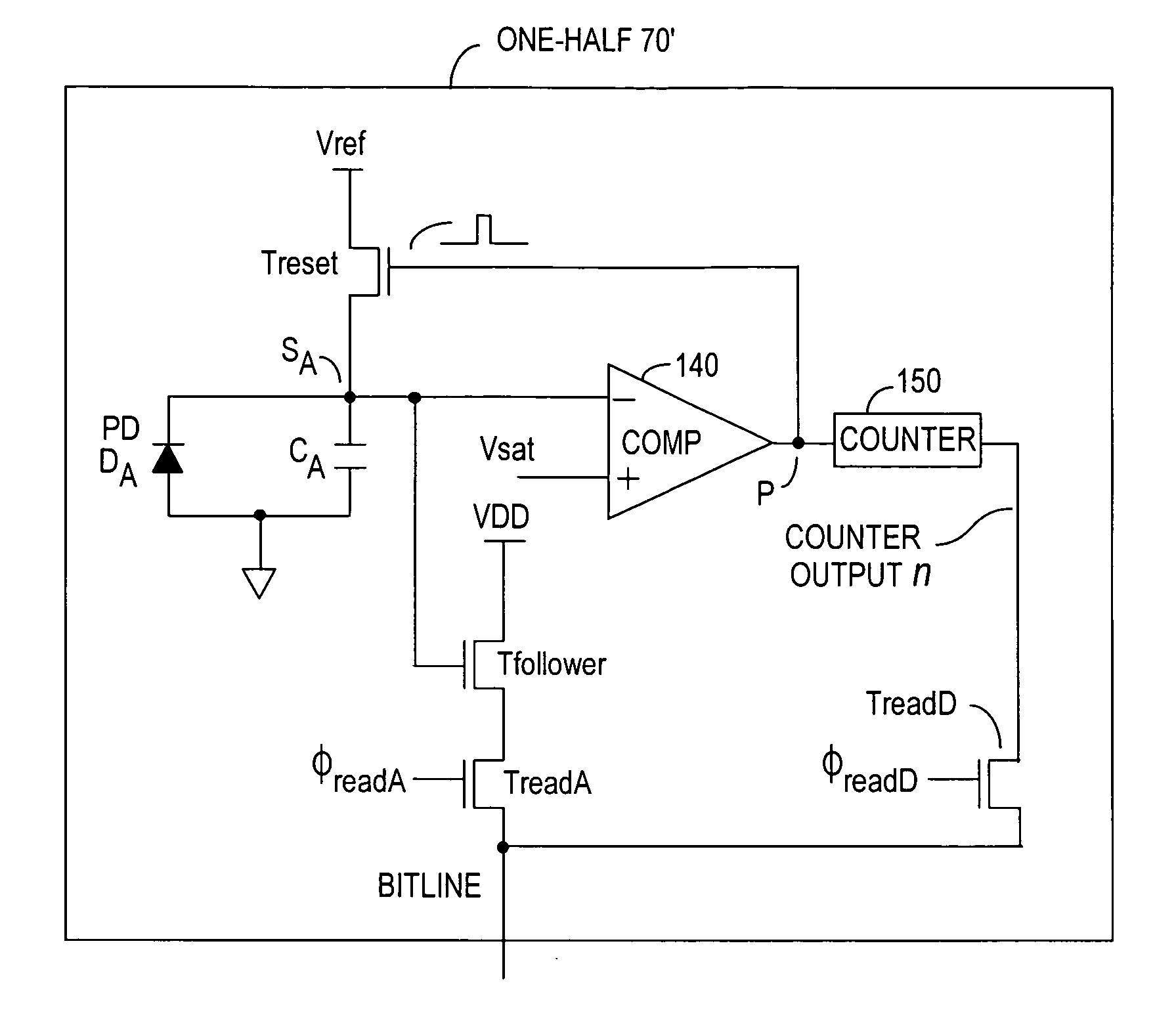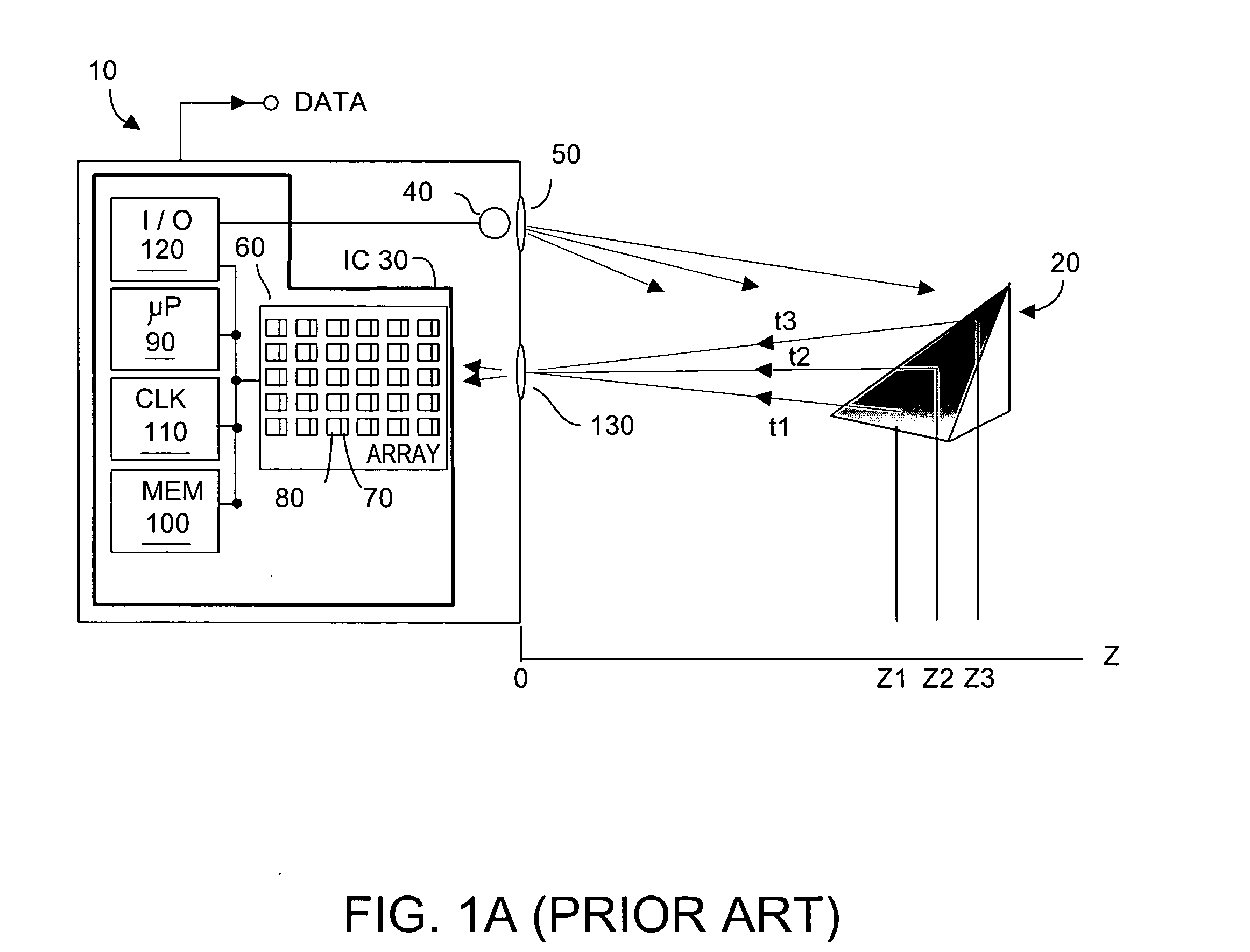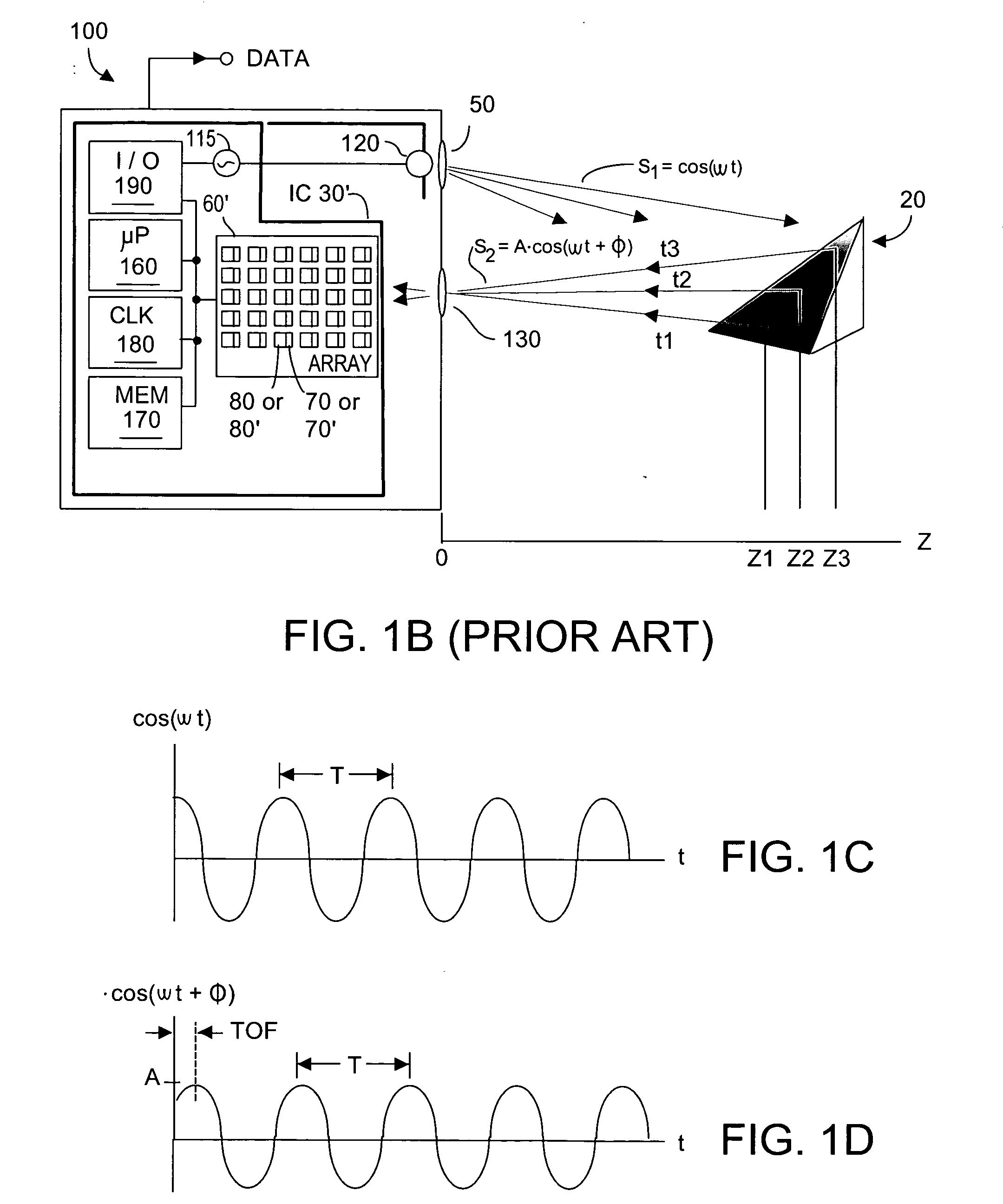Method and system to enhance differential dynamic range and signal/noise in CMOS range finding systems using differential sensors
- Summary
- Abstract
- Description
- Claims
- Application Information
AI Technical Summary
Benefits of technology
Problems solved by technology
Method used
Image
Examples
Embodiment Construction
[0072] Before describing the present invention, whose description commences with FIG. 14, it is useful to first describe embodiments of U.S. Pat. No. 6,919,549, from which priority is claimed. Description of the '549 patent will be made with reference to FIGS. 3A-10B. Next a description of priority application Ser. No. 11 / 110,982 will be made with reference to FIGS. 11, 12, and 13. An understanding of the operation of pixel differential photodetectors and the evolution of their associated electronic circuitry (sometimes referred to herein as differential pixel) will now be described with reference to FIGS. 3A-13, to enable a better understanding of the present invention.
[0073]FIG. 3A, taken from the '549 patent, depicts one-half of differential pixel detector 70′, where it is understood that TOF system 100 shown in FIG. 1B might now employ an array 60′ of rows and columns of differential pixel detectors 70′ as will now be described, rather than pixel detectors 70. In FIG. 3A, only ...
PUM
 Login to View More
Login to View More Abstract
Description
Claims
Application Information
 Login to View More
Login to View More - R&D
- Intellectual Property
- Life Sciences
- Materials
- Tech Scout
- Unparalleled Data Quality
- Higher Quality Content
- 60% Fewer Hallucinations
Browse by: Latest US Patents, China's latest patents, Technical Efficacy Thesaurus, Application Domain, Technology Topic, Popular Technical Reports.
© 2025 PatSnap. All rights reserved.Legal|Privacy policy|Modern Slavery Act Transparency Statement|Sitemap|About US| Contact US: help@patsnap.com



